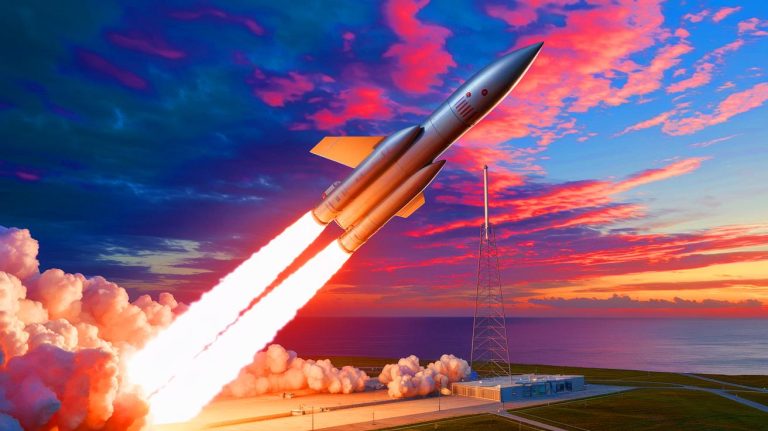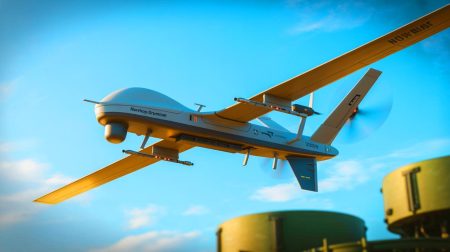| IN A NUTSHELL |
|
In a world where speed and precision are the cornerstones of modern warfare, the recent test of the Dark Eagle hypersonic missile by the US Department of Defense signifies a monumental leap forward. Conducted in secrecy at Cape Canaveral Space Force Station, this test represents a pivotal moment in military technology. With its ability to travel at an astonishing 3,800 miles per hour, the Dark Eagle missile can reach global targets within mere minutes, posing new strategic challenges and opportunities. This article delves into the implications of this groundbreaking technology, exploring the secrecy surrounding the test, the capabilities of hypersonic weapons, and their potential impact on global security.
The Secretive Dark Eagle Launch
The Dark Eagle launch was shrouded in secrecy, reflecting the sensitive nature of hypersonic weapon testing. The US Department of Defense provided minimal information about the mission, citing national security concerns. A spokesperson mentioned that a collaborative team, including government, academic, and industry partners, was involved in the test at Cape Canaveral. Despite the lack of public announcement, a navigational warning from the US Coast Guard hinted at the activity, establishing a security zone in the Atlantic to ensure safe testing conditions.
The Dark Eagle’s capabilities are truly remarkable. With a speed of approximately Mach 5—five times the speed of sound—and a range of 1,725 miles, the missile demonstrates the US military’s commitment to maintaining technological superiority. This test marks the second hypersonic trial at Cape Canaveral, following an initial test in December of the previous year. The implications of such tests go beyond mere technical achievements, raising questions about international security dynamics and defense strategies.
New Hypersonic Capabilities
Hypersonic weapons are rapidly becoming a focal point for the world’s military powers, offering unprecedented advantages in speed and reach. The US Army describes the Dark Eagle as a land-based, truck-launched system capable of evading traditional air and missile defenses. Its ability to travel beyond the atmosphere and strike with little warning makes it a formidable tool for deterrence and rapid response.
Each Dark Eagle unit is slated to consist of four launchers and eight missiles, with deployment expected by the fiscal year 2025. Although development has been delayed by two years, the strategic benefits are clear. As Patrick Mason, a senior US official, noted, hypersonic weapons complicate adversaries’ decision-making processes, enhancing deterrence. The speed, accuracy, and adaptability of these systems align perfectly with their evocative name, Dark Eagle.
Global Security Implications
The introduction of hypersonic weapons like the Dark Eagle is set to redefine global security paradigms. These weapons can strike anywhere in the world within minutes, rendering traditional defense systems obsolete. As military powers race to develop comparable technologies, the potential for a new arms race looms large. The US Navy is also exploring hypersonic capabilities, aiming to implement a system called Conventional Prompt Strike on its naval vessels, further expanding the reach and versatility of hypersonic technology.
While hypersonic weapons offer strategic advantages, they also pose significant risks. The lack of reaction time and the difficulty in intercepting such fast-moving targets increase the likelihood of rapid escalation in conflicts. As nations navigate this new era of military technology, the need for international cooperation and arms control agreements becomes increasingly apparent.
The Future of Hypersonic Weaponry
The Dark Eagle represents just the beginning of what could be a transformative era in military technology. As hypersonic weapons become integral to national defense strategies, the balance of power may shift in unforeseen ways. The US is not alone in its pursuit of hypersonic capabilities; other nations are investing heavily in similar technologies, driving innovation and competition.
As the military landscape evolves, the questions surrounding the ethical and strategic use of hypersonic weapons grow more pressing. How will international treaties and agreements adapt to this new reality? Will the development of these technologies lead to enhanced global security or increased instability? As we stand on the brink of this new age, one must ponder: how will the world respond to the challenges and opportunities presented by hypersonic weapons?
Did you like it? 4.5/5 (29)










Wow, 1,725 miles in minutes?! That’s faster than my WiFi! 🚀
Is there any information on how this affects current international treaties? 🤔
Why was it kept so secret? Shouldn’t the public be informed about such advancements?
Are you not informed?
Thanks for the article! This really highlights the speed at which military tech is advancing. ⚡
Not sure how I feel about this… sounds like it could lead to more global tension.
Did anyone else think of “Dark Eagle” as a superhero name? Just me? 😂
I’m concerned about the implications of these weapons. Are other countries developing similar tech?
It’s both impressive and terrifying how quickly the military tech is evolving. 😱
It is so secret you can read publically about it on the news.